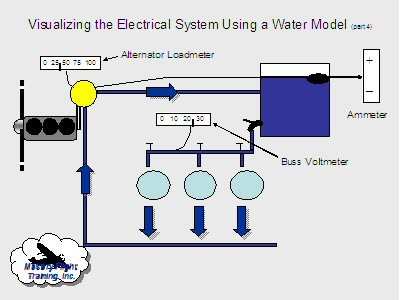Aero-Tips!
A good pilot is always learning -- how many times have you heard
this old standard throughout your flying career? There is no truer
statement in all of flying (well, with the possible exception of
"there are no old, bold pilots.") It's part of what makes aviation
so exciting for all of us... just when you think you've seen it
all, along comes a scenario you've never imagined.

Aero-News has called upon the expertise of Thomas P. Turner,
master CFI and all-around-good-guy, to bring our readers -- and us
-- daily tips to improve our skills as aviators, and as
representatives of the flying community. Some of them, you may have
heard before... but for each of us, there will also be something we
might never have considered before, or something that didn't
"stick" the way it should have the first time we memorized it for
the practical test.
It is our unabashed goal that "Aero-Tips" will help our readers
become better, safer pilots -- as well as introducing our
ground-bound readers to the concepts and principles that keep those
strange aluminum-and-composite contraptions in the air... and allow
them to soar magnificently through it.
Look for our daily Aero-Tips segments, coming each day to you
through the Aero-News Network. Suggestions for future Aero-Tips are
always welcome, as are additions or discussion of each day's tips.
Remember... when it comes to being good pilots, we're all in this
together.
Aero-Tips 02.18.06
This is it. I promise. But to be sure you really understand your
airplane’s electrical system, try these last few questions.
Answers are at the end of the article.

- What should the ammeter, buss voltmeter and alternator
loadmeter show during normal cruise flight?
- Turn on something that uses a lot of electricity, like a
landing light. What should each of the three gauges read? What
happens when you turn the high-power item off?
- Your alternator quits. What will the three gauges
indicate?
- You notice that the buss voltage reads 13 volts (in a 14 volt
system) or 26 volts (28V airplane). What’s happening? What
should the other two gauges indicate?
Answers
- If everything’s running normally the ammeter will show
about neutral, with neither a charge nor a discharge, the buss
voltmeter will indicate 14 volts or 28V, as applicable, and the
alternator loadmeter will typically run less than 50% of its rated
output.
- If you watched the gauges immediately when turning on the
switch you’d see the ammeter begin to discharge while the
buss voltmeter maintains 14V or 28V. The alternator loadmeter then
shows an increase as it picks up the load, and if the system is
capable the ammeter then charges before returning to neutral. Turn
the item off and the reverse happens: an ammeter charge with a
steady buss voltmeter, followed by an alternator loadmeter decrease
before everything returns to normal indications (answer 1). In
practice the ammeter needle may simply flicker unless a LOT of
electricity is used.
- Ammeter: discharge. Buss voltmeter: immediate drop to 12V or
24V, then a steady drop further. Alternator loadmeter: zero.
- For some reason your alternator is not putting out full power.
The ammeter may discharge and the alternator loadmeter likely reads
low. Turn off nonessential equipment to conserve electricity, and
consider landing as soon as practical.
Please note: This "water visualization" is not technically
correct -- but it does a superb job of helping pilots comprehend
what’s going on with the electrical system to accurately
monitor it and troubleshoot problems…as you’ve
probably seen by your ability to answer these questions. Engineers,
mechanics and purists, please forgive this teaching tool.
Aero-tip of the day: Familiarity with the
electrical system and its indicators lets you understand when
it’s working... and when it’s not. To be safe, actively
monitor the electrical system.
 ANN's Daily Aero-Term (05.10.24): Takeoff Roll
ANN's Daily Aero-Term (05.10.24): Takeoff Roll Aero-News: Quote of the Day (05.10.24)
Aero-News: Quote of the Day (05.10.24) Aero-News: Quote of the Day (05.11.24)
Aero-News: Quote of the Day (05.11.24) ANN's Daily Aero-Term (05.11.24): IDENT Feature
ANN's Daily Aero-Term (05.11.24): IDENT Feature ANN's Daily Aero-Linx (05.11.24)
ANN's Daily Aero-Linx (05.11.24)




